
8 minute read
BEFORE OPERATING THE BOBCAT HYDRAULIC EXCAVATOR
Safety Alert Symbol:This Safety symbol is used for important safety messages. When you see this symbol, follow the safety message to avoid personal injury or death.
Operator must have instructions before operating Bobcat loader or excavator and approved attachment. Untrained operators can cause injury or death.
W–2253–0996
The Excavator must be in good operating condition before use. Check all of the items on the Service Schedule under the 8–10 hour column.
B–10731
For your safety, warnings are on the machine and in the Operation & Maintenance manual. Failure to obey warnings can cause injury or death.
W–2044–1285
This notice identifies procedures which must be followed to avoid damage to the machine.
I–2019–0284
SAFE OPERATION NEEDS A QUALIFIED OPERATOR*
A QUALIFIED OPERATOR MUST DO THE FOLLOWING:
• UNDERSTAND THE WRITTEN INSTRUCTIONS, RULES AND REGULATIONS
• The written instructions from Melroe Company include the delivery report, operator handbook, Operation & Maintenance Manual, and machine signs (decals).
• Check the rules and regulations at your location.
• HAVE TRAINING WITH ACTUAL OPERATION
• Operator training must consist of a demonstration and verbal instruction. This training is given by your excavator dealer before the excavator is delivered.
• The new operator should start in an area without bystanders and use all the controls until he can operate safely unde r all conditions of the work area.
• KNOW THE WORK CONDITIONS
• For each material to be handled, the operator must know how to avoid exceeding the rated lift capacity of th e excavator. For example, you should not use the excavator for lifting heavy objects.
• The operator must know any prohibited uses or work areas, for example, he needs to know about excessive slopes
• Know the location of any underground lines. Call local utilities or ONE CALL before you dig.
• Wear tight fitting clothing. Always wear safety glasses when maintaining or servicing excavator. Safety glasses, hearing protection or an excavator special application kit are required for some work. See your dealer about Melro e Safety equipment.
* For an operator to be qualified, he must not use drugs or alcoholic drinks which impair his alertness or coordination ewhil working. An operator who is taking prescription drugs must get medical advice to determine if he can safely operate a machine.
Fire Prevention
The excavator has several components that are at high temperature under normal operating conditions. The primary source of high temperatures is the engine and exhaust system. The electrical system, if damaged or incorrectly maintained, can be a source of arcs or sparks. These conditions make it important to avoid applications where explosive dust or gases can be ignited by arcs, sparks or heat.
Flammable debris (leaves, straw, etc.) must be removed regularly. If flammable debris is allowed to accumulate, it will increase the fire hazard. The excavator must be cleaned as often as necessary to avoid this accumulation. This flammable debris in the engine compartment can be a fire hazard when the machine is parked with a hot engine.
If equipped the spark arrestor muffler is designed to control the emission of hot particles from the engine and exhaust system, but the muffler and the exhaust gases are still hot. This spark arrestor muffler does not change the need to avoid use of the excavator in an atmosphere with explosive dust or gases or where the exhaust can contact flammable material.
• Do not use the Hydraulic Excavator where explosive dust or gases can be ignited by arcs, sparks, hot components or exhaust gases.
• The operator cab, engine compartment and engine cooling system must be inspected every day and cleaned if necessary to prevent overheating. Remove all flammable material.
• Check all electrical wiring and connections for damage. Keep the battery terminals clean and tight. Repair or replace any damaged part.
• Check fuel and hydraulic tubes, hoses and fittings for damage and leakage. Tighten or replace any parts that show leakage. Always clean fluid spills.
• Do not use ether or starting fluids on any engine which has glow plugs. These starting aids can explode and injure bystanders.
• Always clean the excavator before doing any welding. Cover rubber hoses, battery and all other flammable parts. Keep a fire extinguisher near the machine when welding.
• Stop the engine and let it cool before adding fuel. No smoking!
• Use the procedure in Operation & Maintenance Manual for connecting the battery.
• Use the procedure in the Operation & Maintenance Manual for servicing the spark arrestor muffler (if equipped) every 100 hours of operation.
• Know where fire extinguishers and first aid kits are located and how to use them. A fire extinguisher is available from your Bobcat Dealer.
MACHINE SIGNS (DECALS)
Follow the instructions on all the Machine Signs (Decals) that are on the Excavator. Replace any damaged machine signs and be sure they are in the correct location. Machine signs are available from your Bobcat Excavator dealer.
MACHINE SIGNS (DECALS) (Cont’d)
Follow the instructions on all the Machine Signs (Decals) that are on the Excavator. Replace any damaged machine signs and be sure they are in the correct location. Machine signs are available from your Bobcat Excavator dealer.
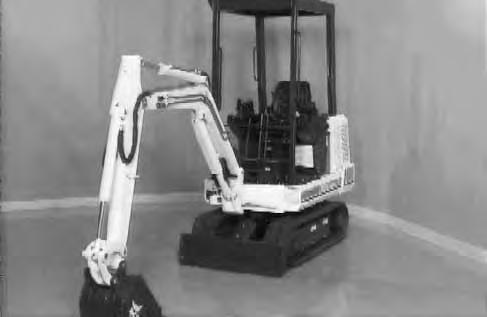
Getting On And Off The Machine
Use the grab handles, the tracks and the safety treads to get on and off the machine [A]
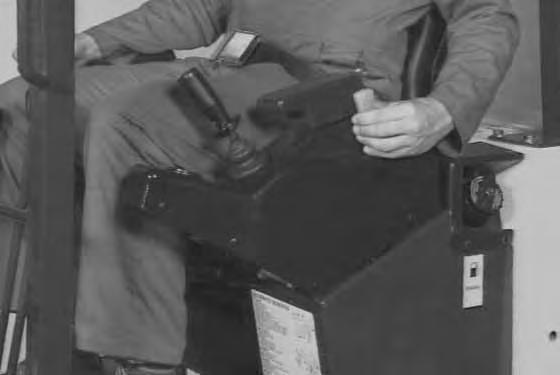

Lower the control console(s) before Starting the Engine. (See Page 13 [C]).

Pull the lever (Item 1) [D] to the rear to release and raise the control console.
NOTE:On Excavators equipped with ROPS canopy, both the left and right control consoles can be raised for operator access. On Excavators with enclosed cab, only the left control console can be raised.
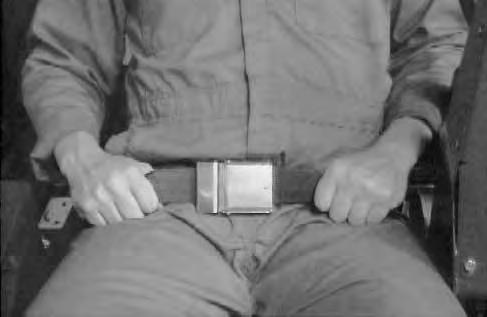
Seat
The operator seat can be adjusted as follows:
Release the seat adjustment lever (Item 1) [A]. Slide the seat backward or forward for easy reach of the machine controls.


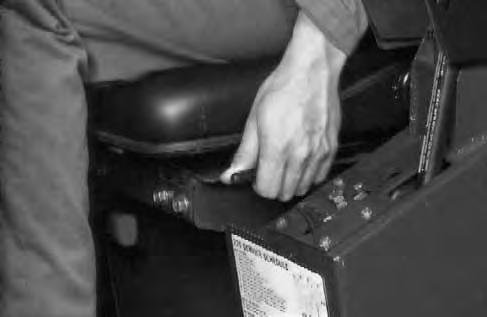
NOTE:For ease of access to the seat adjustment lever, have the left hand console in the raised position.
The handle (Item 1) [B] has three adjustments for operator weight.
Turn the knob (Item 1) [C] to angle the back of the seat for operator comfort.
CONTROL LEVER (JOYSTICK) LOCK
The control lock microswitch (Item 1)[D] disconnects the hydraulics from the joystick control levers when the control console(s) are in the raisedposition. (The joystick control levers will not operate with theconsole(s) raised).
NOTE:The travel levers, blade lever, boom swing pedal and the attachment operation pedal functions are NOT affected by the control lock.

CONTROL LEVER (JOYSTICK) LOCK (Cont’d)

Lower the control console(s) to engage the joystick control levers [A]


Instruments
The right control console has the following indicator lamps [B]:
1. Engine Temperature Lamp – (Overheat indicator) When the engine coolant temperature exceeds the allowable temperature range, the lamp comes ON and the audible alarm sounds. STOP the engine.
2. Engine Oil Lamp – When the engine oil pressure is low, the lamp comes ON and the audible alarm sounds. STOP the engine.
3. Charging Lamp – The lamp comes ON when the alternator is NOT charging the battery.
4. Preheat Indicator Lamp – When turning the keyswitch to the HEAT position, the lamp comes ON showing the glow plugs are heating.
The left control console has the following indicator lamp and instrument [C]:
1. Low Fuel Indicator Lamp – When the fuel is low, (.8 gal. [3.1 L]), the lamp comes ON. Add fuel.
2. Fuel Gauge – Shows the amount of fuel in tank.
Inside the engine compartment are the following instruments and fuses [D]:
1. Hourmeter – Records the total operating hours. (If the ignition key is left in the run position, with the engine OFF, the hourmeter will continue to run and the audible alarm will sound).
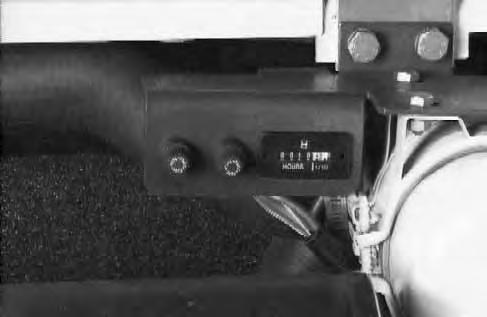
2. Fuse – Ignition (25 Amp) – This fuse supplies the power for engine start up, gauge functions, horn, and audible alarm and control console microswitches.
3. Fuse Accessories (25 Amp) – This fuse supplies power for the cab heater (if equipped) and accessories.
Audible Alarm
An audible alarm (Item 1) [A] located in the right hand console, will sound when these conditions exist:
When the key is in the ON position with the engine stopped.
When there is low engine oil pressure.
When there is high engine coolant temperature.
Key Switch
The key switch has the following functions [B]:
A.Key switch is OFF.
B.PREHEAT position – Hold switch in this position for a maximum of 15 seconds to activate the glow plugs for starting in cold weather conditions.
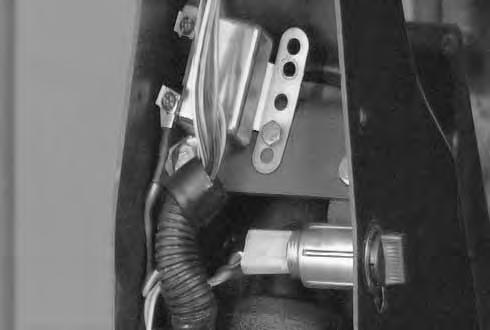
C.START the engine.
D.ON (run) position – When the engine is running release the key and this position is obtained automatically.
NOTE:Always turn key switch and all accessories to OFF position after the engine is stopped or battery will discharge. Audible alarm will sound if the key is in the ON position with the engine stopped.
See Pages 14 and 15 for the starting procedure.
CAB ELECTRICAL (If equipped)
The cab overhead console has the following components [C]:


1. Wiper Switch – off, low and high speed.
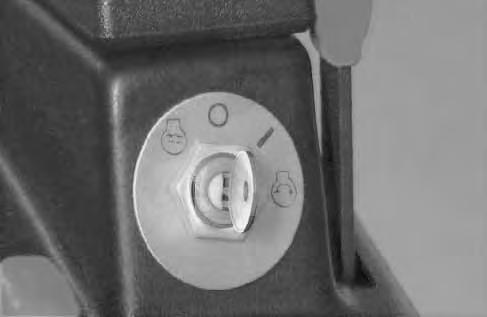
2. Light Switch – controls the front exterior lights and the fuel gauge backlight.
3. Radio – (if equipped)
4. Fuse – cab, this fuse supplies power for cab exterior lights, interior light and wiper.
5. Interior Light – push button on the side of the light to activate.
HEATER CONTROL (If equipped)
The rotary switch (Item 1) [B] controls the heater fan motors, off, low and high speed [D].
The temperature control (Item 2) [D] controls the heat range.
CONTROL LEVERS (JOYSTICKS)

The work equipment is operated by using the left and right control levers (joysticks) [A] & [B]
Operation Of Left Control Lever (ISO)
Arm and Swing (Decal P/N 6587426).
The left lever is used to operate the arm and to swing the upperstructure [A]:
1.Arm Out
2.Arm Out and Bucket Dump
3.Bucket Dump
4.Arm In and Bucket Dump
5.Arm In
6.Arm In and Bucket Curl
7.Bucket Curl
8.Arm Out and Bucket Curl
Before swinging the upper works, make sure the swing lock is disengaged. I–2051–0189

Operation Of Right Control Lever (ISO)
Boom and Bucket (Decal P/N 6587425)
The right lever is used to operate the boom and bucket [B]:
1.Boom Lower
2.Boom Lower and Bucket Dump
3.Bucket Dump
4.Boom Raise and Bucket Dump
5.Boom Raise
6.Boom Raise and Bucket Curl
7.Bucket Curl
8.Boom Lower and Bucket Curl
Before leaving the machine:
• Lower the attachments to the ground.
• Stop the engine & remove the key.
W–2167–0195
CONTROL LEVERS (STANDARD)

The work equipment is operated by using the right and left control levers (joysticks) [A] & [B]
Operation Of Left Control Lever (STANDARD)
Boom and Swing (Decal P/N 6587428)
The left lever is used to operate the boom and swing the upperstructure [A]:
1.Boom Lower
2.Boom Lower and Swing Right
3.Swing Right
4.Boom Raise and Swing Right
5.Boom Raise
6.Boom Raise and Swing Left
7.Swing Left
8.Boom Lower and Swing Left
Before swinging the upper works, make sure the swing lock is disengaged. I–2051–0189

Operation Of Right Control Lever (STANDARD)
Arm and Bucket (Decal P/N 6587427)
The right lever is used to operate the armand bucket [B]:
1.Arm Out
2.Arm Out and Bucket Dump
3.Bucket Dump
4.Arm In and Bucket Dump
5.Arm In
6.Arm In and Bucket Curl
7.Bucket Curl
8.Arm Out and Bucket Curl
Before leaving the machine:
• Lower the attachments to the ground.
• Stop the engine & remove the key.
W–2167–0195
Swing Lock
When the swing locking lever (Item 1) [A] is engaged (locked position), the upperstructure of the excavator is locked to the track frame and will not swing. The upperstructure must be parallel to the track frame to engage the swing lock.
Lift the swing lock lever (Item 1) [B] to disengage the upperstructure from the track frame. Put the lever in the unlocked position.
Avoid Injury
The swing lock lever must be engaged when transporting the machine.

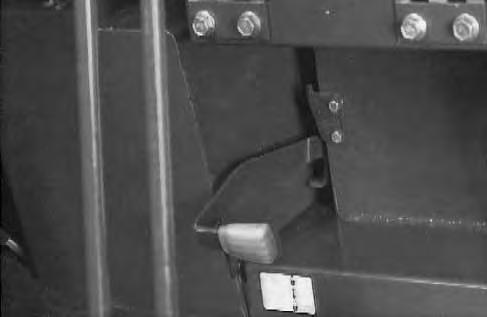
Never engage the swing control lever when the swing lock pin is engaged. Engage the swing lock pin only after the upper works is parallel with the track frame.
The horn button (Item 1) [D] is located in the right control lever (joystick) grip.

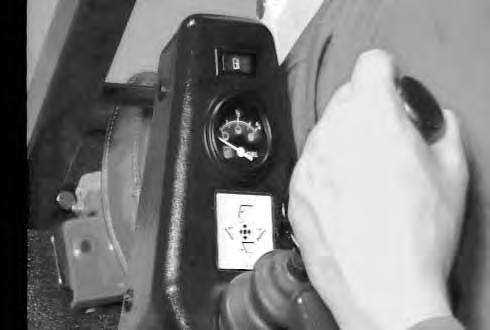
Speed Control Lever
The speed control lever is used to control the engine speed [A]
1.LOW IDLE POSITION – Pull the lever backward (position 1) for low idle, (Approximately 1000 RPM).

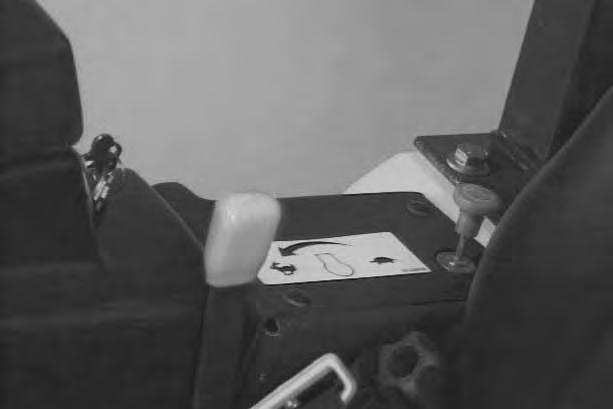
2.HIGH IDLE POSITION – Push the lever fully forward (position 2) for full engine RPM, (Approximately 2500 RPM).
Engine Stop Control
Pull the knob up to STOP the engine [B]. (When the engine has stopped, push the stop control knob down to the operating position. This will avoid possible starter damage if engine start–up is attempted and the stop control knob has been left in the OFF position).




